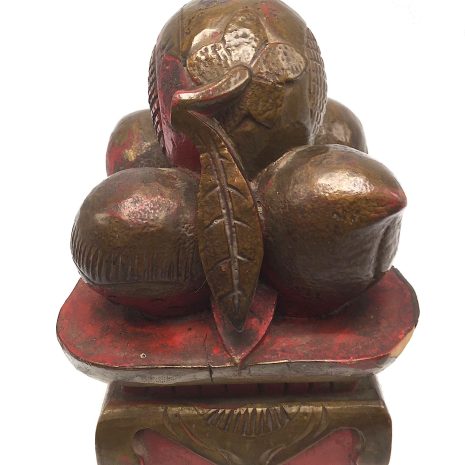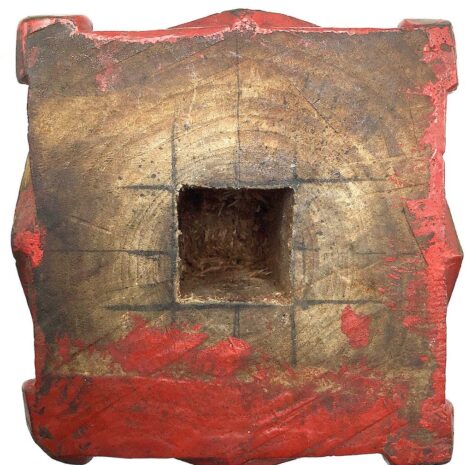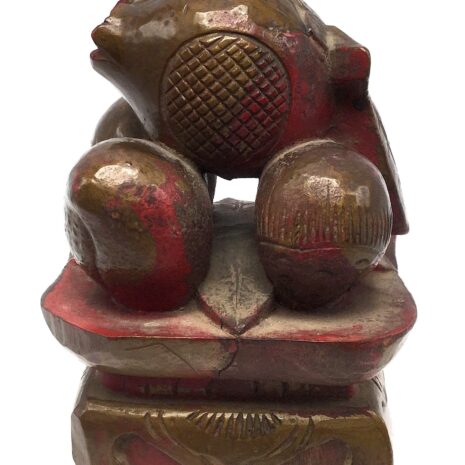Antique Carving of Auspicious Fruit Offering, China (19304)
Original price was: $225.00.$155.00Current price is: $155.00.
H: 4.75 ” Dia: 3.675 ” | FREE SHIPPING WITHIN CONTINENTAL U.S.
This carved food offering was an auspicious bed ornament to bring the lucky couple prosperity, health, a long life and many sons as the pomegranate symbolizes fertility, the peaches longevity. Carved offerings were often wedding gifts.
Description
Representations of wood food offerings with a lacquer coating are often part of the array of images spread on a temple or home altar and shrines and are substitutes or additions to what is ordinarily fresh fruit and food. This one was an auspicious ornament for a Chinese bed. Very auspicious, food offerings are to communicate with deities and ancestors as part of ancestor worship to bring blessings to the family who then hope to receive their blessings, guidance, virtues and values as well recognized fertility symbols, longevity symbols, etc. Offerings are sometimes held by attendants or often, as here, integrated into furnishings or architectural decorations.
The pomegranate (shilui) on top of this antique Chinese wood carving is a fertility symbol as it has numerous seeds and is a homophone wish for 100 sons (liukai baizi). The four fruits below are peach longevity symbols and the combination of the fruits are a wish for many sons and longevity and are perfect gifts for newlyweds. The symbolic wish for fertility and producing many sons is reflected the expectation that newlyweds must produce sons soon after marriage to “…perpetuate the family name and to continue to worship ancestors. To have no descendants is the greatest sin against filial piety.” (Bartholomew p.58)
The finely carved fruits were painted with red and browns and covered with lacquer that darkens over time, all preserved in this charming presentation which is in excellent condition.
Sources
Terese Tse Bartholomew, Hidden Meanings in Chinese Art, San Francisco, Asian Art Museum of San Francisco, 2006.
Primal Trek, “The Hidden or Implied Meaning of Chinese Charm Symbols,” primal trek
Patricia Bjaaland Welch, Chinese Art: A Guide to Motifs and Visual Imagery, Rutland, Tuttle Publishing, 2008.
Additional information
| Weight | 3 lbs |
|---|---|
| Dimensions | 8 × 8 × 8 in |
| Place of Origin | China |
| Period | Antique, Qing Dynasty |
| Date | 19th Century |
| Materials and Technique | Wood |
| Dimensions (inches) | Ht: 4.75" W: 3.675" |
| Dimensions (metric) | Ht: 12.06cm W: 9.33cm D: 9.33cm |
| Weight | 12oz |
| Condition | Excellent, fine patina demonstrating age and use |
| Item Number | 19304UAK |
| Shipping Box Size |










